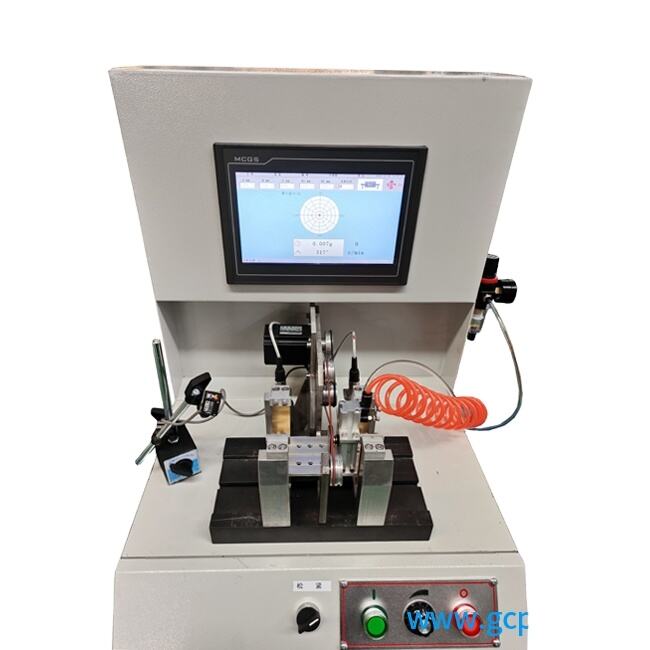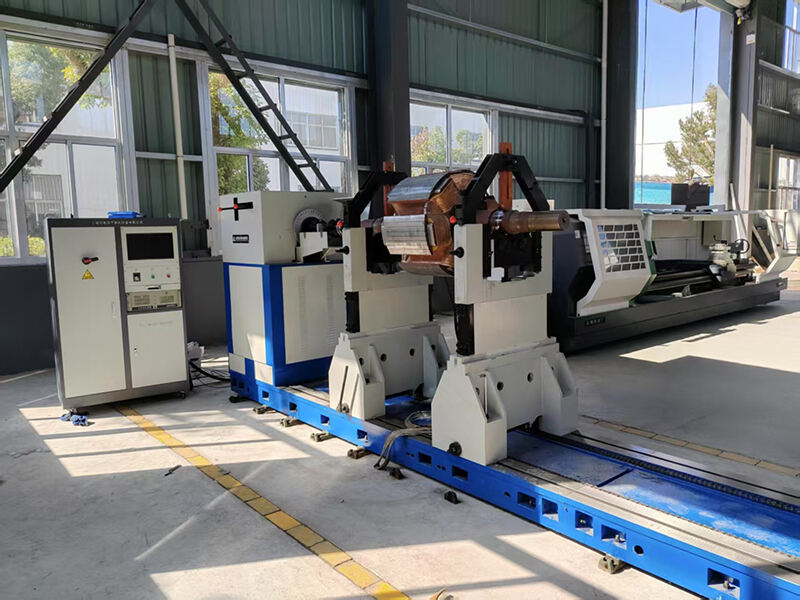Understanding Modern Centrifuge Balancing Technology
The world of industrial and laboratory equipment has evolved significantly, with centrifuge balancers playing a crucial role in ensuring precise, efficient, and safe operation of centrifugal machines. These sophisticated devices help maintain optimal balance during high-speed rotation, preventing equipment damage and ensuring accurate results. Whether you're working in a research facility, medical laboratory, or industrial setting, selecting the appropriate centrifuge balancer is paramount to your operation's success.
Modern centrifuge balancers combine advanced sensors, precise measurement capabilities, and intelligent software to monitor and adjust rotor balance in real-time. This technology has revolutionized how facilities maintain their centrifugal equipment, leading to improved efficiency, reduced maintenance costs, and enhanced safety protocols.

Essential Features of Quality Centrifuge Balancers
Advanced Sensing and Measurement Capabilities
A superior centrifuge balancer incorporates state-of-the-art sensing technology to detect even minimal imbalances during operation. These sensors continuously monitor vibration levels, speed variations, and load distribution, providing real-time feedback to the control system. The most advanced models utilize multiple sensor arrays to create a comprehensive picture of the rotor's dynamic behavior.
Digital measurement systems in modern centrifuge balancers offer unprecedented accuracy, typically measuring imbalances down to microns. This precision ensures optimal performance across various applications, from delicate laboratory procedures to heavy industrial processes.
User Interface and Control Systems
The interface of a centrifuge balancer should be intuitive yet comprehensive. Look for systems featuring clear digital displays, touchscreen controls, and easily navigable menus. The best models offer customizable settings for different applications while maintaining straightforward operation for daily use.
Advanced control systems should include automatic calibration features, preset programs for common applications, and the ability to store multiple configuration profiles. This flexibility allows operators to quickly switch between different protocols while maintaining consistent accuracy.
Key Considerations for Selection
Application-Specific Requirements
Different industries and applications demand specific features from their centrifuge balancers. Laboratory environments might prioritize precision and cleanliness, while industrial applications may require robust construction and higher load capacities. Consider the types of samples or materials you'll be processing, required speeds, and environmental conditions when selecting your equipment.
The size and weight range of your typical loads should also influence your choice. Some centrifuge balancers excel at handling micro-samples, while others are designed for large-scale industrial applications. Ensure the model you choose can accommodate your full range of expected use cases.
Safety Features and Compliance
Safety should never be compromised when selecting a centrifuge balancer. Look for models with comprehensive safety features including emergency stop functions, overload protection, and automatic shut-off mechanisms. The equipment should meet or exceed relevant industry safety standards and certifications.
Modern centrifuge balancers often include advanced safety monitoring systems that can detect potential issues before they become critical. These predictive maintenance capabilities can prevent equipment damage and protect valuable samples or materials.
Maintenance and Support Considerations
Regular Maintenance Requirements
Understanding the maintenance needs of different centrifuge balancer models is crucial for long-term planning. Consider the frequency of required calibrations, parts replacement schedules, and cleaning procedures. Some models offer self-diagnostic capabilities and preventive maintenance alerts, which can significantly reduce downtime and maintenance costs.
Look for systems that provide detailed maintenance logs and performance history. This data can be invaluable for tracking equipment health and planning maintenance schedules effectively.
Technical Support and Service Networks
The availability of technical support and service networks should factor into your decision. Choose manufacturers that offer comprehensive support packages, including training, troubleshooting assistance, and rapid response times for service calls. Consider the geographical location of service centers and the availability of replacement parts.
Some manufacturers provide remote diagnostic capabilities and online support platforms, which can expedite problem resolution and minimize downtime. These features can be particularly valuable for facilities operating in remote locations or running critical processes.
Cost Considerations and ROI
Initial Investment Analysis
While the initial cost of a centrifuge balancer is significant, it's essential to evaluate the total cost of ownership. Consider factors such as energy efficiency, maintenance requirements, and expected service life. More expensive models often incorporate features that can reduce operating costs over time.
Calculate the potential return on investment by considering factors such as improved efficiency, reduced downtime, and lower maintenance costs. High-quality centrifuge balancers typically offer better long-term value despite higher upfront costs.
Operating Cost Evaluation
Evaluate ongoing operational costs including power consumption, maintenance expenses, and consumable materials. Energy-efficient models may command a premium price but can deliver significant savings over time. Consider also the cost implications of downtime and the potential impact on your operations.
Some modern centrifuge balancers include energy monitoring and optimization features that can help reduce operating costs. These systems can adjust their operation based on load conditions, maximizing efficiency while maintaining performance.
Frequently Asked Questions
How often should a centrifuge balancer be calibrated?
Professional calibration is typically recommended annually, though specific requirements may vary based on usage intensity and manufacturer guidelines. Regular self-diagnostic checks should be performed monthly, and some high-precision applications may require more frequent calibration.
What are the signs that a centrifuge balancer needs maintenance?
Key indicators include increased vibration during operation, unusual noises, longer processing times, inconsistent results, and error messages on the control panel. Regular monitoring of performance metrics can help identify potential issues before they become serious problems.
Can centrifuge balancers be upgraded or modified after purchase?
Many modern centrifuge balancers offer software upgrades and modular components that can be updated or replaced to enhance functionality. However, hardware modifications should only be performed by authorized technicians to maintain safety and warranty coverage.




